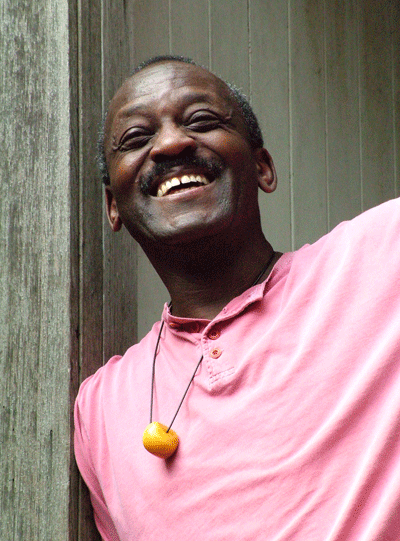By James DeKoven
The slow screech of a braking bus. Two voices in conversation. Police sirens and fire alarms and honking car horns. It’s noise to many, but singer-songwriter Jesse Foster finds these sounds of urban life inspiring.
“I discover ideas for harmony and melody in the sounds of everyday life,” he says.
Part of his everyday life is spent here in the neighborhood. You’ll often find him hanging out with the locals at Peet’s on Fillmore, tapping out a rhythm and shooting the breeze: politics, sociology — and music, of course. Pull up a chair and you might learn about his evolution as a musician, a 30-year journey of refining his craft and keeping the faith that has paid off with the release his first album and regular live performances in local clubs.
Born in Alabama in 1946 and raised in Cleveland, Foster became interested in music early, the seeds planted by the yodeling he heard in a television commercial and constant exposure to his sister’s Jimmy Reed records. At seven, he began playing percussion on oatmeal boxes, a precursor to the innovative stylings that would make him a master percussionist. The earth moved when he saw Nat “King” Cole’s television show.
“Man, that’s what I want to do,” he recalls thinking at the time.
By the early 60s he was singing with doo-wop groups and organ combos, the types of musical groups made popular in the day by Gene Ammons, Jack McDuff and Richard “Groove” Holmes.
By the 1970s, after time in Canada, he found the rich music scene in San Francisco. At the edge of 30, he decided it was time to settle in here and go for the musical career he wanted. He took operatic voice lessons from a gifted teacher who encouraged him to teach, which would become a major element of his career.
Gaining confidence, he formed a band called Creations in Sound, which often played at the legendary Minnie’s Can-Do Club on Fillmore. Another project, a soul fusion outfit called Life is Color, also developed a strong local following and won praise from Phil Elwood, the respected jazz and blues critic for the Examiner for many years.
Foster’s evolution continued. In 1977, Life is Color played a series of gigs at the legendary Keystone Corner. In the early 80s, he landed a spot in Jules Broussard’s band.
On his CD, “People, Places and Songs,” Foster distills the influence of Marvin Gaye, John Coltrane and Minnie Ripperton into a distinctive style. He blends the sanctified vocal delivery of classic soul with the spiritual sensibilities of 1960s avant-garde jazz.
“People, Places and Songs” is very much a personal affair. “How Are You” tells the story of meeting his wife, Michelle; “Lost Love Returns” is about reuniting with an old friend; and “Claudia,” the opening track, conveys his love for his mother.
In live performances, he fills the room with his ever-present smile and joyous energy while delivering his own original compositions, plus inventive versions of songs by Antonio Carlos Jobim, Luther Vandross, Chick Corea and Al Jarreau.
When he’s not recording or performing, Foster is often teaching and encouraging other aspiring musicians. He teaches at the Community Music Center on Capp Street and also offers private lessons on improvisation and vocal technique in jazz, soul and rhythm and blues.
Most important, he says, is teaching students to improvise, often in response to the urban sounds that surround them. “I teach my students to be open to influences,” Foster says. “If you hear two cars honking, figure out the interval, the rhythm. Let the environment stimulate you.”
Back on Fillmore at Peet’s, easing into his morning routine, he practices what he preaches — greeting friends, telling stories and ever so gently drumming on the table to the rhythm of the passing scene.
Filed under: Music






